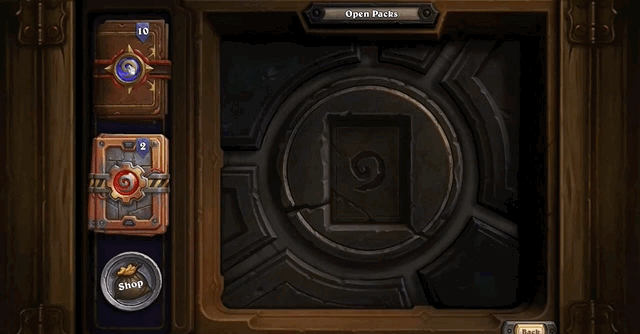
The User Experience of Lootboxes
I hope you like GIF’s. I brought GIF’s.
Disclaimer: In real life, when I’m not pretending I know how to write, I work for a gambling company here in Australia. This means that lootboxes — gambling — in video games is a unique point of interest for me. I’m not a gambler in any sense, but I deal with the industry on a daily basis. I think this gives me a unique perspective on the topic, and I want to be up front about where I’m coming from when I talk about it.
I believe gambling is much like drinking or smoking — it’s harmful to millions of people, and requires a significant effort by both gambling corporations and governments to regulate the medium effectively. I also, however, believe that just like drinking and smoking, it is an adults choice to participate in any form of gambling.
In gaming, gambling takes a different tone. There are very, very few barriers in most games for minors to participate in lootboxes, which absolutely are gambling. I believe there is an inherent ethical responsibility on any developer or publisher to put safeguards in place to protect kids. I also believe that it is the governments responsibility to enforce strict regulations on developers on how, and when, they institute gambling systems in games.
The views expressed in this article do not reflect the views of Tabcorp in any way. These are my own personal opinions.
I hope you like GIF’s. This article has a few.
Lootboxes
were the number one gaming story of 2017. More specifically, games like
Star Wars Battlefront 2 — a relatively good game in it’s own right that
was significantly hampered by it’s extremely heavy-handed
micro-transaction system.
I
don’t want to dwell on the ethics or merits of these systems (I’ve done
that enough in the disclaimer), but what I do want to talk about is
how — from a UX perspective — these systems work and affect players.
I
will say, however, that I unequivocally do not support games that put
gameplay upgrades (especially those that grant power in a competitive
setting) behind a paywall — commonly referred to as pay-to-win. I’m
talking about games like FIFA Ultimate Team, Star Wars Battlefront 2,
and to a lesser extent, Fortnite. Players shouldn’t have to pay money to
have a better experience than other players.
There’s some key techniques successful lootboxes use to create an exciting opening experience — let’s see what they are:
Artificial Scarcity
Rarity
is a massive driver in games. As soon as something is rare, it becomes
intrinsically valuable to a player. This makes sense in the real
world — there’s not much gold, so that which exists has value. In the
digital world, everything is only as rare as a developer makes it.
Lootboxes
often use thematic visual changes to represent time gates on certain
boxes. Card packs or crates that are only available for certain periods
have a unique style, so you feel as though you need to get it now, or
you’ll miss out. This combines a sense of urgency and rarity — something
that can powerfully influence a players’ decision to purchase.

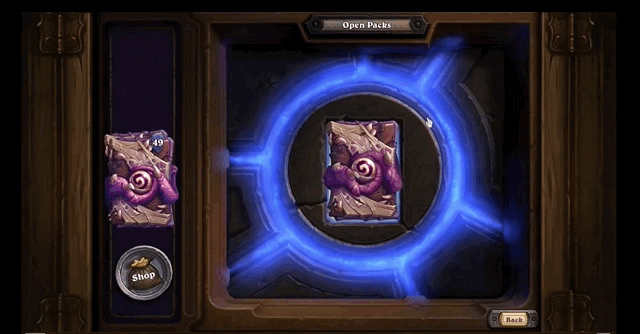
Hearthstone
is a good example of this. Each new expansion has it’s own card-pack
style. It makes them feel special, and also gives that message that
they’re new, or limited.
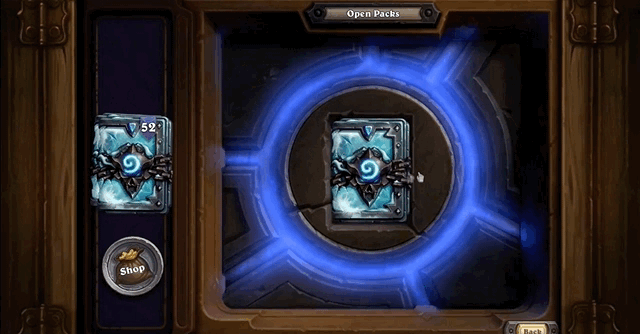
Hearthstone
doesn’t remove these card packs for purchase, so there is technically
no urgency (other than the need to have the best cards to stay
competitive, of course), but the visual styling still motivates
purchases.
EA
Sports FIFA series actually does this a bit better. Their Ultimate Team
mode has card packs that players can purchase (more on that later) that
award football players for your teams.

EA
releases new, upgraded versions of players every week, alongside with
regular events throughout the season. If you don’t buy packs that
week/event, you can’t get that version of the player.
It’s very, very effective when your favourite player has a special edition card that you want. I may or may not have been brainwashed by this trick. More than once. Like, a lot, actually.
The Drumroll
Early
lootboxes were simple — purchase me and get some loot. A few years ago,
though, things got a little complex. Lootboxes started opening with
some fancy graphics and cool effects. A big shift was what I call the drumroll. It’s
that moment between clicking ‘Open’ and finding out what you’ve got,
where often the box will reveal something about your rewards.
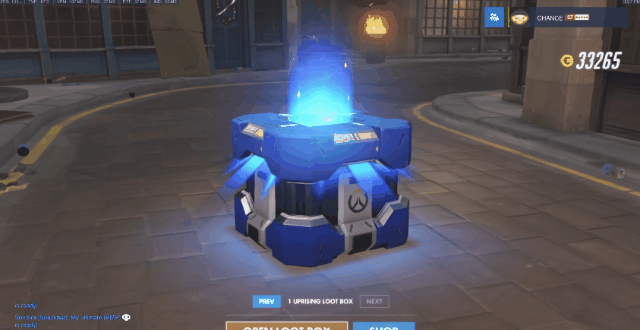
This
Overwatch box is a great example. There’s a moment where the rewards
are spinning through the air and you catch a glimpse of the rarity of
what you’re getting. When you see the orange glow of a legendary skin,
it’s exciting and builds anticipation. Likewise, if you open 20 boxes
and don’t get to see that orange hue, there’s tangible disappointment.
FIFA
does this well, also. When you open a pack, the animation changes
depending on the best player you recieve. Take a look at the three
animations below:



The
first two are relatively subtle, but even from the first moment of
opening there’s some additional gold effects and a slightly different
split effect for the rare opening.
The
third opening is referred to as a ‘Walkout’ in the community — it’s
reserved for highly rated players, and the player animation is
personalised to one that player is known for in real life. When the
billboards pop out of the pack, you immediately know you’re up for a
good player. If that player jumps on screen, you’ve got one of the best
in the game.
The
excitement in these effects don’t start at the reveal, however. The
excitement builds from the moment the pack starts to split and you
recognise the unique effect that tells the player they’re in for
something good.
The Big Reveal
As
you might expect, the grand reveal is the most important part of any
lootbox. This is where the player experiences limitless euphoria or
bitter disappointment.
Ironically,
there’s not too much to say about this. The boxes we’ve looked at so
far are great examples of fun reveal moments; Hearthstone’s slow
card-turn, FIFA’s staggered reveal of country, then position, then team,
and finally the player’s name and portrait.
So, to change things up, let’s look at a few that I think are bad at this:
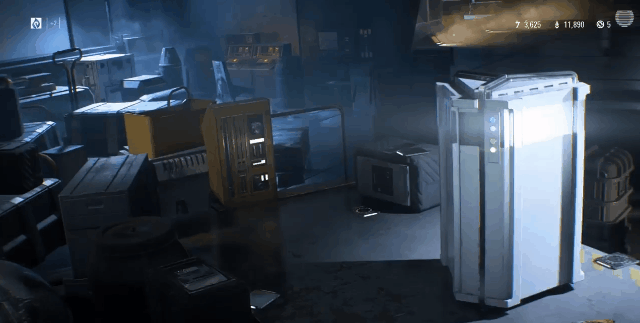
Star
Wars Battlefront 2 drew so much ire in 2017 for offering powerful
player upgrades in their lootboxes. They got slammed for this choice
and, in turn, made some changes. It didn’t mean much though. What’s
staggering is that despite this huge focus on a microtransaction model,
the animation sucks. The holographic reveal has no impact, the color
codes aren’t vibrant or exciting, and most packs came with intangible
junk anyway. Boring.

Call
of Duty WWII had you call in ‘Supply Drops’ in a player populated
hubspace between matches. This was a pretty transparent mechanism to
show players who weren’t buying boxes just how much fun everyone else
was having with their loot. The card flip lacks impact for me, and
there’s no real drumroll beyond waiting for the cards to turn. Not
great.

Aesthetically,
I actually really like Fortnite’s loot-llamas. It’s also a relatively
generous loot model, although it loses any possible browny points by
having tangible upgrades locked behind purchasable lootboxes. Overall,
it’s a creative execution that lacks any punch. The loot slows down the
rarer it is, which actually feels more tedious than it does exciting.

Battlefield
1’s crates are a prerendered animation followed by a static image of
the weapon skin you get. It’s kind of cool the first two or three times,
but once that delight wears off it feels more like an afterthought.
Snore.
The Power of Choice
Something that’s come up relatively recently is giving players choices in their loot. There isn’t too many examples
of this, but I did want to showcase a few games that use this
technique. I think it’s a fun, pro-player way to create additional
engagement in these sort of random drop systems.

When
you get a ‘Keg’ in Gwent, the fifth card in the pack is one you choose
from a set of three. This is a great way to solve an ongoing problem
with TCG games, where players rarely have the ability to purchase
specific cards ad-hoc.

In
Fortnite, at a certain tier of loot, the rarest item in a lootbox will
be given to the player as a choice of two equally rare items. This is
often between two weapon types, or two new heroes. It’s a nice way to
make the loot more meaningful to the player, as they can choose
something relevant to them.
In closing, I’d just like to say that lootboxes, for the most part, are completely evil.
I
actually really like microtransactions as a concept. I think it’s a
good way for developers to generate ongoing revenue and can be done in a
way that doesn’t negatively impact the game, or the playerbase.
I
also acknowledge that this concept has existed pretty much since Magic:
The Gathering got big. Trading Card Games are almost exclusively built
around a random-pack model (although the ability to trade cards
mitigates this by creating a secondary market).
Furthermore,
I admit that lootboxes when done right can be really fun. I quite like
Overwatch’s interpretation — you earn them through standard gameplay,
they only contain cosmetics, and you are rarely encouraged to make a
purchase. There’s even a recovery mechanic in place so that you can
outright purchase items you haven’t been lucky enough to recieve
(Although this could be better).
But lootboxes, like booster packs, are gambling. They
just are. And it’s a shame that such a large part of the industry
(Including our two biggest publishers, EA and Activision Blizzard) are
not so deeply entrenched in these systems as a way to sustain their
games.
If
you’re going to do lootboxes, please, fill them only with cosmetics.
Having upgrades that affect gameplay in a randomised system compromises
the integrity of your game, and forces players to choose between
investing or being at a disadvantage.
There’s a right way and a wrong way to make systems like these work. There’s also a fun way. I don’t think lootboxes are going anywhere, but hopefully they’re going to get better.

